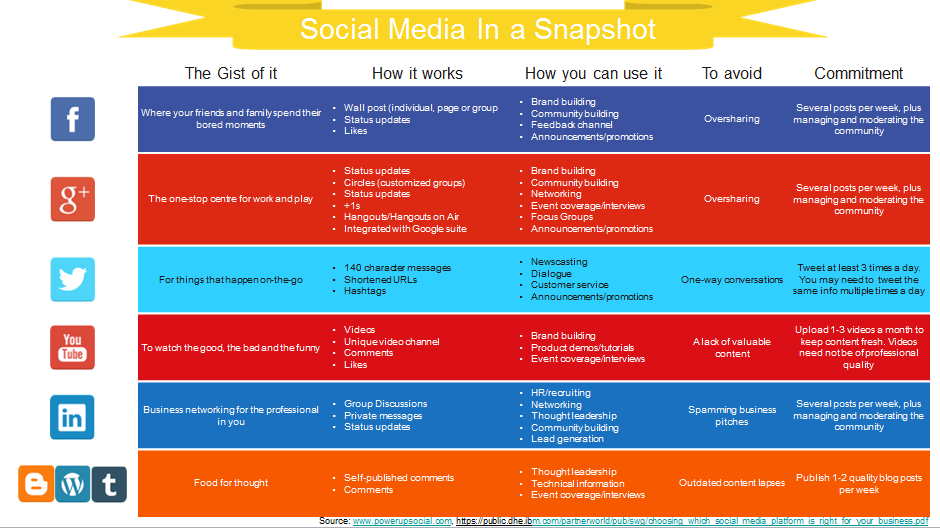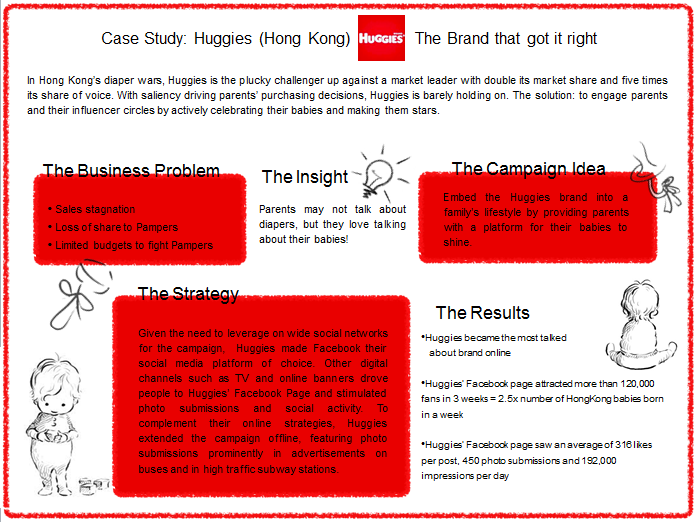Engaging Your Customers and Prospects on Social Media
Love it or hate it, social media is here to stay. As social media becomes increasingly embedded into our daily lives, it is more important than ever for businesses to make full use of this marketing opportunity.
Businesses now have the ability to engage their customers through self-created content and encourage the promotion of their brand through various social networks like Facebook, Twitter, Instagram, and YouTube.
Should your business be on social media?
Unlike what many businesses think, building a thriving online community is not just about having a Facebook page. As the adage goes, you reap what you sow. Crafting and monitoring a social media strategy is no mean feat, but the potential benefits of establishing a social media presence can be enormous. Unlike traditional forms of media, the social media landscape is changing by the second with customer interactions taking place all round the clock. This means that a significant amount of resources have to be dedicated towards managing your business’ social media presence. So before jumping onto the social media bandwagon, decide if it is worth the time and investment.
Figure out what social media can help achieve for your business by identifying your business goals and whether the target audience can be reached via this channel. If your answer to any one of these three questions is a no, you may want to reconsider your marketing strategy:
- Are the majority of your prospects and customers currently using social media, i.e. Facebook, YouTube, Twitter, Instagram?
- Are you able to commit dedicated personnel to manage your social media channels on a daily basis (social media needs to be the key role of someone’s responsibilities)?
- Can social media help your organization achieve its larger goals (be it delivering to your bottom line, understanding more about your customers or cultivating more meaningful relationships with your customers)?
Given the wide availability of social platforms, which should your business establish its presence on? Here is a summary of some of the most widely used platforms:
The Basics of Social Content Creation
If you think that you can a wholesale copy and paste of the content you developed for other digital channels onto social media channels for the same effect, think again. The importance of having relevant and engaging content cannot be understated. Given a constant mindboggling influx of information, it is up to businesses to make the most out of every post, tweet and instagram photo they publish. The following is a guideline to mapping out your social content strategy.
Step 1: Identify platforms (see above ‘Social Media in a Snapshot’ infographic for more details on different platforms)
The vital step before crafting a content strategy is to clearly define who your target audience is, find out how they consume social content, which platforms they use, and for what specific purposes. Once you have identified the most relevant social media platforms for your business, develop a consistent social media strategy that may be implemented across all the platforms.
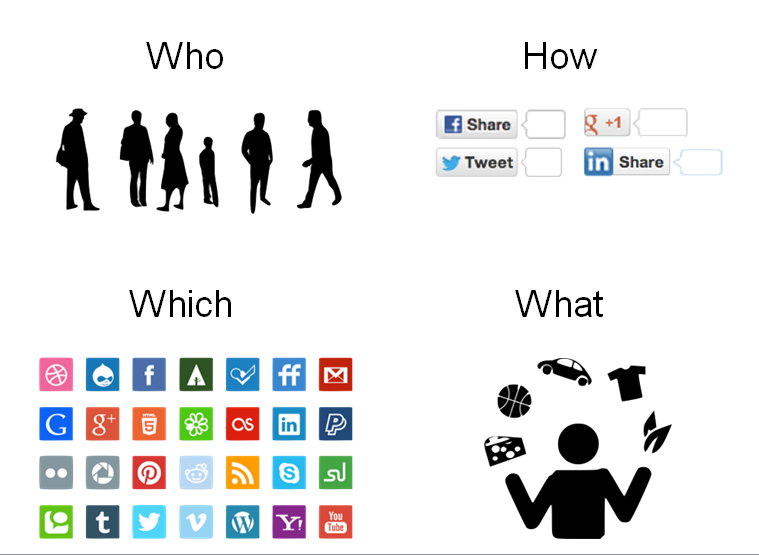
Step 2: Define content themes
Effective content compels the user to talk back to the brand. While it is important to maintain flexibility to capitalize on fluctuating trends and ‘sentiments-of-the-moment’, a business needs to clearly define the content themes they intend to cover on their social media platforms so as to give some form of structure and direction to the content creation process. Think of the content themes that are relevant to your business and craft your content accordingly. Haphazard content production will only make you a Jack of all trades but master of none. When using multiple social media platforms, take especial care in customizing your content to suit the unique features of each.
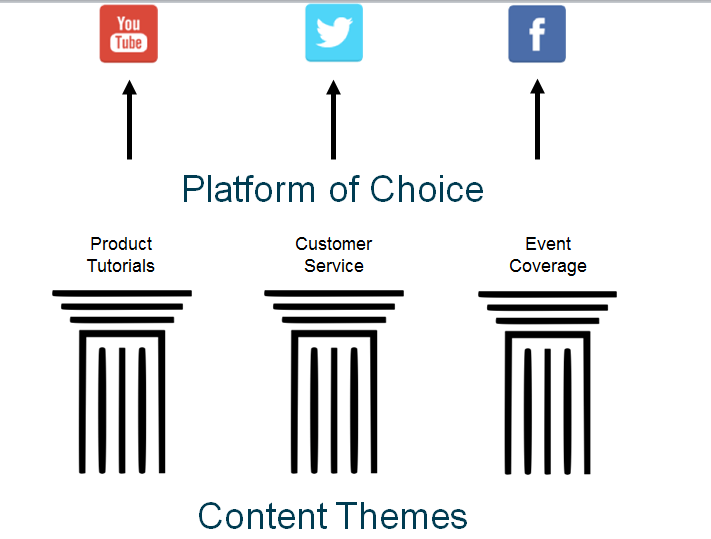
Step 3: Organizing and planning content for different platforms
Adopt integrative digital storytelling, conveying your brand’s story to your consumers by leveraging on the unique features of different platforms. While this practice is applicable across your larger digital marketing strategy (email, search, etc), it is particularly important in social media. Take time to organize and plan content across platforms. One of the most efficient (and free!) ways to track and plan content is by using Google Calendar.
A cloud-sourced document with easy sharing features, Google Calendar makes it a great way to keep everyone instantly updated on your content rollout. Ideally, a content calendar should be planned and chartered out in Google calendar well in advance of the rollout. Last minute changes can be reflected instantly on the calendar.
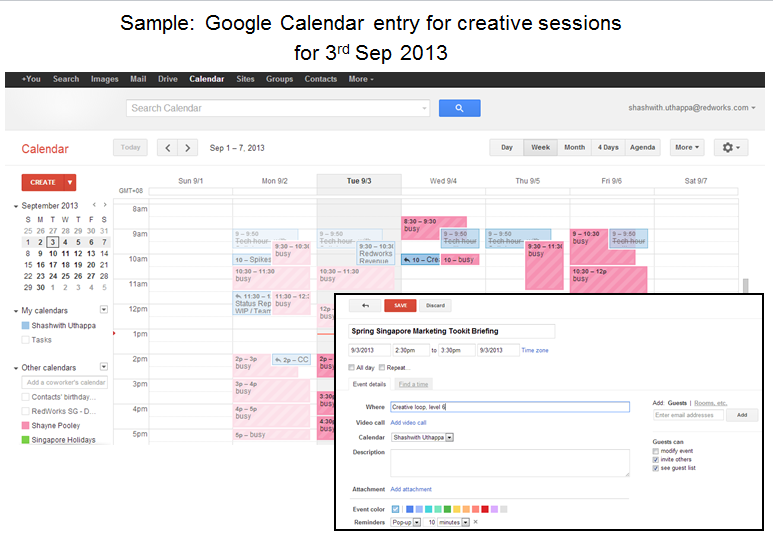
Tip: Free online tools like Hootsuite (https://hootsuite.com/) and Sprout Social (http://sproutsocial.com/) offer a comprehensive social media management dashboard for you to easily integrate your content published across platforms.
Step 4: Documenting feedback
Collecting feedback from your customers either through comments or platform analytics is one way to measure your success on social media. Review your brand’s interactions with your fans and followers regularly, and be on a vigilant look out for content that resonate with your audience (comments + shares) so you can build on it.

Basics of Social Media Community Management
#1: Know your voice
When posting on social media platforms, it is important to have a tone of voice that matches your brand’s personality and offerings. For example, a bank could adopt a more serious tone to convey professionalism whilst a candy-maker could adopt a humorous tone to convey lightheartedness and fun. Develop a tone of voice with your target audience in mind and think of the kind of personalities that would appeal to them. Consistency is key – select a few appropriate characteristics and descriptors to remind you and your colleagues of the tone to adopt when crafting social media posts. Tip: To really bring your voice to life, base it on a personality that you are familiar with – be it fellow colleague or a popular celebrity.
#2: Listen
One of the most empowering aspects of social media is that it offers consumers an avenue to voice out their thoughts and concerns about a brand. More often than not, businesses benefit most not from the constant bombardment of promotional messages, but from the insights gleaned from listening attentively. However, learn to avoid reacting defensively and get past the noise to find out what really makes your customers tick.
#3: Engage
The key to building brand loyalty lies in encouraging active user participation. The content should elicit responses and spark brand conversations both within and beyond the community. Customer engagement helps to build a sense of community with your brand and adds value to the customer experience. Crowdsourcing is another interesting form of customer engagement that involves outsourcing the content creation and/or idea generation process to an online community. One successful campaign that implemented this was Volvo’s “You Inside”, which invited members of its online community to share what they kept in their cars. The captured information was used as input that aided the design of new Volvo car models.
To conclude, building a community is really about having a social conversation with your customers and prospects. Effectively managed social media communities can afford you fresh insights and useful ideas, give your brand a distinct voice, and foster a new breed of fiercely loyal customers. Listen to what your community has to say, acknowledge their sentiments, and make the changes that people want to see.
Basics of Social Media Monitoring
What is a business plan without key performance indicators? Similarly, a social media strategy requires assessment metrics that should be defined from the get-go. While there is a dizzying array of social media metrics to choose from, you can save on time and resources by focusing on those that align with your overarching business goals. To start you off, here are a few key metrics:
How well does it increase relevant awareness? Measure it using…
● Number of people actively engaged with the brand (impressions)
● Share of consumers who associate the brand with key attributes (survey)
How well does it drive preference? Measure it using…
● Preference for brand and its services (survey, manual assessment)
How well does it encourage action? Measure it using…
● Participation in the brand’s marketing efforts (Conversion tracking reports and conversion tracking for coupons, sweeps etc.)
● Share of consumers who have used or intend to use the brand
A good way to decide on appropriate metrics to chart your social media performance is to refer to the digital blue print drawn up in Section 2 of this toolkit. The following is a list of metrics that could be set against different stages of the customer cycle.

Analytics Tools
You just need a simple Google Search and you can discover a plethora of analytics tools to aid your social media monitoring. Depending on your business needs, these tools can either deliver detailed insights on specific platforms (think Facebook Analytics), or function as a dashboard that simultaneously manages multiple social networks (think HootSuite). Functionalities and prices vary, so be sure to explore the options available and pick one that matches your goals and budget.
Other Useful Tools
Here are some useful websites shared by our readers which might interest you:
